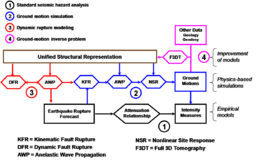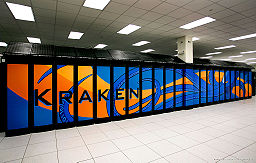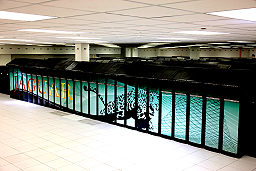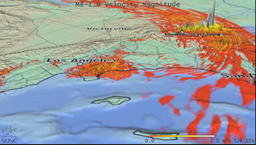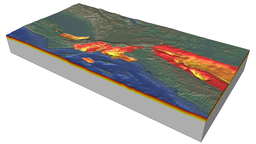Main Page
Contents
Community Modeling Environment (CME)
This is a collaborative wiki site for SCEC's Community Modeling Environment (CME). The CME is a collaborative, interdisciplinary research group that applies advanced computer science technology to the problem of seismic hazard analysis. This SCEC community wiki is configured to support our distributed research by providing a collection point for information about SCEC scientific computing research projects.
List of All SCECpedia Pages
The following link with take you to an alphabetically sorted list of all SCECpedia pages.
Recent CME Wiki Entries
The following list of SCECpedia topics are sorted chronologically with new and recently updated entries shown at the top of the list. This list of topics may not be complete, so we recommend you use the List of All SCECpedia Pages link if you want a comprehensive list of all entries.
- Broadband_Platform_on_HPCC
- CME Meeting 2012
- Broadband Platform
- CyberShake
- High-F
- XSEDE/PRACE Workflow Workshop
- SCEC Technical Activity Groups
- Wiki Statistics
- NWSC ASD
- ASD Viz
- California CVM Meeting - 3 April 2012
- LARA Meeting 2012
- Ground Motion Simulation Validation (GMSV) Coordination Meeting
- Data Management
- Blue Waters
- AGU
- Earthquake Early Warning
- SCEC Visualization Projects
- PetaSHA3 Project
- CME Project
- CVM-H
- UCVM
Recent Earthquake Information
An important goal of SCEC earthquake research is to reduce the hazard from future earthquakes by developing physics-based predictive models of earthquake processes.
- Public CME Website
- Collaborative SCEC Wiki
- SCEC Home Page
- SDSC High Performance Geocomputing Laboratory
- PetaSHA3 Project
- CME Movies and Animations
- CVM-Toolkit
- SCEC Websims Data Management Site
- SCEC CSEP Testing Center
SCEC Computer Science Collaborative Organizations and Resource Providers
- SDSC Geohpcl
- SDSC
- SDSC HPGeoC
- SDSC Visualization Services
- Scientific Workflows at USC/ISI
- Fault Tolerant Computing at CSM
- USC HPCC
- PSC
- NICS
- NCCS
- TACC
- NCSA
- Blue Waters
- Open Science Grid
Overviews and Summaries
CME Research Support
Southern California Earthquake Center (SCEC) and SCEC/CME research is funded by National Science Foundation (NSF) Cooperative Agreements EAR-0106924 and USGS Cooperative Agreement 02HQAG0008, and NSF awards EAR- 074493, EAR-0949443, OCI-0832698, and OCI-0832698. This research is supported by an allocation of advanced computing resources provided by the National Science Foundation (NSF). Computations are performed on Kraken (a Cray XT5) at the National Institute for Computational Sciences. Computations and data management are performed at San Diego Supercomputer Center, where the iRODS Data System is used. The Texas Advanced Computing Center (TACC) at The University of Texas at Austin, the National Center for Supercomputer Applications (NCSA) and the Pittsburgh Supercomputer Center (PSC) provide HPC resources. Computations are supported by the University of Southern California Center for High-Performance Computing and Communications (HPCC). Our research uses HPC resources provided by the U.S. Department of Energy (DOE) through an Innovative and Novel Computational Impact on Theory and Experiment (INCITE) program allocation award. Computations were performed on Jaguar, which is part of the National Center for Computational Science (NCCS) at the Oak Ridge National Laboratory which is supported by under DOE Contract No. DE-AC05-00OR22725. This research uses resources of the Argonne Leadership Computing Facility at Argonne National Laboratory, which is supported by the Office of Science of the U.S. Department of Energy under contract DE-AC02- 06CH11357. The Ohio State University one-sided MPI Communication research was supported through NSF HECURA-1 (CCF- 0833169/139/155). This research received technical and user support through the Advanced Support for TeraGrid Applications (ASTA) program.
See Also
Additional information about SCEC earthquake system science research is available on related SCEC web sites including:



